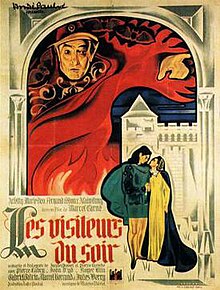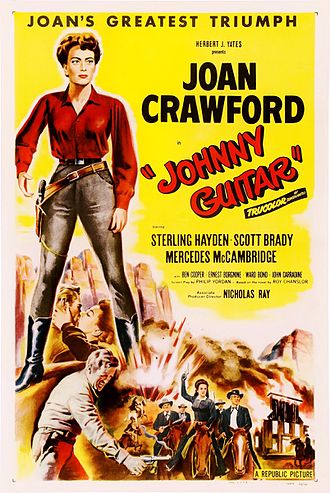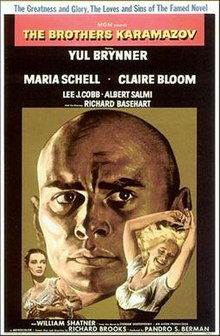Course description
A detailed history of film beginning with the golden age of the U.S. studio system and its major genres. Among the topics and films considered will be the rise of sound film; Hollywood in the 30s; the impact of World War II; neo-realism; film noir; the blacklist; the impact of television and the decline of the studio system; Japanese cinema; the emergence of European auteurs; beginnings of the French New Wave.
[ORC/Catalog, 06/02/2023]; Dist:INT or ART; WCult:W
Please note: If you are looking at the history of cinema for a specific country, look at the National Cinemas guide also.
Defining neorealism in cinema
NEOLIBERALISM (ITALIAN NEOLIBERALISM)
1. A body of socially conscious films, made on small budgets and shot on location using non-professional actors, that emerged in Italy between the mid 1940s and early 1950s; the films dealt with the everyday lives of ordinary working people in the aftermath of war and subscribed to the ideals of a post-Fascist popular social renewal.
2. A political-aesthetic disposition, inspired by the spirit and methods of these films, informing a range of national cinemas worldwide from the 1950s. A term previously used in relation to art and literature, Neorealism was first applied to film with reference to Luchino Visconti’s Ossessione/Obsession (1942), which is widely regarded as the movement’s precursor. Neorealism shares with realism a disposition towards seeing truth in the visible world and a confidence in cinema’s capacity to convey that truth. It also embodies the notion that cinema can and should be socially critical, and that films may properly have a consciousness-raising function. Roberto Rossellini’s Roma città aperta/Rome Open City (1945), regarded as the first Neorealist film, was a worldwide critical and commercial success. It was followed, among others, by Vittorio De Sica’s Sciuscià/Shoeshine (1946) and Ladri di biciclette/Bicycle Thieves (1948), and Giuseppe De Santis’s Riso amaro/Bitter Rice (1949). A rise of conservatism and an eclipse of populist anti-fascism in late 1940s Italian politics contributed to the decline of Neorealism, whose endpoint is commonly dated to 1952, the release year of de Sica’s box-office failure, Umberto D. The directors associated with Neorealism continued to make films, while a new generation of filmmakers—influenced by, but pushing the boundaries of—Neorealism arose in the 1950s, among them Federico Fellini, Michelangelo Antonioni, and Pier Paolo Pasolini. ...
Kuhn, A., & Westwell, G. (2020). Neorealism. In A Dictionary of Film Studies. Oxford University Press. Retrieved 2 Jun. 2023
In the Library's collections
You can use one of these subject headings to start your research in the library's online catalog:
-
motion pictures united states historySubstitute another country's name to find those resources.
-
hollywood studio systemThis is a keyword search in the online catalog.
-
world war, 1939-1945 motion pictures and the warThis subject heading finds resources on the depiction of WWII on film. However, these books are found with the call number D 743.23 on Baker Level B.
-
neorealism AND motion picturesThis is a keyword search in the online catalog.
-
film noirCall number range PN 1995.9 .F54 on Baker Level 4.
Introductory reading(s)
-
History of the American cinema by
Call Number: Baker-Berry PN 1993.5 .U6 H55 v. 1-10ISBN: 9780684184135This set is a multi-volume history of American film, beginning from 1895 to the present. -
The Routledge companion to film history by
Call Number: Baker-Berry PN 1994 .R5735 2011ISBN: 9780415776578The Routledge Companion to Film History is an indispensable guide for anyone studying film history for the first time. The approach taken presents a substantial and readable overview of the field and provides students with a tool of reference that will be valuable throughout their studies. ... -
Schirmer encyclopedia of film by
Call Number: eBookISBN: 9780028657912This reference provides a comprehensive and accessible introduction to film and film studies, covering such aspects as production, national traditions, studios, genres, critical theory and film history. ... -
The Wiley-Blackwell history of American film by
Call Number: eBookISBN: 9781405179843The Wiley-Blackwell History of American Film provides a chronological portrait of American film history from its origins to the present day. Taken as a whole, the essays in this collection represent a comprehensive and nuanced overview of American film history from the intersecting perspectives of industry, audiences, aesthetics, culture, politics, issues, and ideology. ...
Selected book title(s)
-
American cinema of the 1930s: themes and variations by
Call Number: Baker-Berry PN 1993.5 .U6 A85735 2007ISBN: 9780813540825Probably no decade saw as many changes in the Hollywood film industry and its product as the 1930s did. At the beginning of the decade, the industry was still struggling with the transition to talking pictures. Gangster films and naughty comedies starring Mae West were popular in urban areas, but aroused threats of censorship in the heartland. Whether the film business could survive the economic effects of the Crash was up in the air. By 1939, popularly called "Hollywood's Greatest Year," films like Gone With the Wind and The Wizard of Oz used both color and sound to spectacular effect, and remain American icons today. ... -
American film and society since 1945 by
Call Number: Baker-Berry PN 1995.9 .S6 Q37 2011ISBN: 9781440800795This post-World War II survey of American cinema provides an in-depth exploration of how film acts as a powerful cultural expression of the American public's dreams and desires. In this recent update to American Film and Society since 1945, the authors added films previously neglected, and broadened their analysis of a number of films by discussing how these works capture the mood and values of American society in a particular decade. Interpretation of films can involve direct connections with social and political issues, but often deal with the important subtext of dreams, desires, and displacements that the American public feels. ... -
The battle for the Bs: 1950s Hollywood and the rebirth of low-budget cinema by
Call Number: eBookISBN: 9780813552538The emergence of the double-bill in the 1930s created a divide between A-pictures and B-pictures as theaters typically screened packages featuring one of each. With the former considered more prestigious because of their larger budgets and more popular actors, the lower-budgeted Bs served largely as a support mechanism to A-films of the major studios--most of which also owned the theater chains in which movies were shown. ... -
Cahiers du Cinéma, the 1950s: neo-realism, Hollywood, new wave by
Call Number: Baker-Berry PN 1995 .C29 1985ISBN: 9780674090606Essays from the influential French film magazine discuss movies by Roger Vadim, Francois Truffaut, Nicholas Ray, Otto Preminger, Alfred Hitchcock, Samuel Fuller, and Roberto Rosselini. -
The SAGE handbook of film studies by
Call Number: Baker-Berry PN 1994 .S325 2008ISBN: 9780761943266Film Studies has emerged as one of the most distinctive and exciting areas of study and research to be established in the second half of the twentieth century. Written by a team of veteran scholars and emerging talents, The SAGE Handbook of Film Studies maps the international traditions of the field, drawing out regional differences in the way that intellectual reflection on cinema and film has been transformed into a field of systematic inquiry. It reflects on the field's conceptual infrastructure, the dominant paradigms and debates, and evaluates their continuing salience. ...
Other library resource(s)
-
American cinema, 1939-1975 from Oxford Bibliographies Online by
Call Number: Electronic resourceISBN: 9780199791286From 1939, when World War II started in Europe, to 1975, when the mega-success of the blockbuster Jaws put an end to what we might call the American “New Wave,” the US film industry traveled through precipitous peaks and valleys. During the war years Hollywood joined the fight: cooperating with government, raising morale, and selling war bonds. -
 The story of film: an odyssey
by
Call Number: Streaming videoFive years in the making, The Story of Film: An Odyssey covers six continents and 12 decades, showing how film-makers are influenced both by the historical events of their times, and by each other. It provides worldwide guided tour of the greatest movies ever made; an epic tale that starts in nickelodeons and ends as a multi-billion dollar globalised digital industry. Described as a 'love letter' to the movies, Cousins visits the key sites in the history of cinemal from Hollywood to Mumbai; from Hitchcock's London to the village where Pather Panchali was shot, and features interviews with legendary filmmakers and actors including Stanley Donen, Kyoko Kagawa, Gus van Sant, Lars Von Trier, Claire Denis, Bernardo Bertolucci, Robert Towne, Jane Campion and Claudia Cardinale.
The story of film: an odyssey
by
Call Number: Streaming videoFive years in the making, The Story of Film: An Odyssey covers six continents and 12 decades, showing how film-makers are influenced both by the historical events of their times, and by each other. It provides worldwide guided tour of the greatest movies ever made; an epic tale that starts in nickelodeons and ends as a multi-billion dollar globalised digital industry. Described as a 'love letter' to the movies, Cousins visits the key sites in the history of cinemal from Hollywood to Mumbai; from Hitchcock's London to the village where Pather Panchali was shot, and features interviews with legendary filmmakers and actors including Stanley Donen, Kyoko Kagawa, Gus van Sant, Lars Von Trier, Claire Denis, Bernardo Bertolucci, Robert Towne, Jane Campion and Claudia Cardinale. -
Moguls & movie stars: a history of Hollywood byCall Number: Jones Media DVD #13553The American movie business started as peepshows and grew into a near-mythical art form that used an exciting new technology to create drama, laughter and adventure literally bigger than life. Here is the whole story -- the glamour and the sweat, the collaborations and the conflicts, the careers that skyrocketed and the dreams that crashed -- in the biggest production ever from Turner Classic Movies, the leading authority on classic movies and film history. Seven enthralling hours of movie clips, rare footage, interviews and keen insight from Hollywood insiders and historians trace moviemaking from its humble beginnings through the Golden Age to the New Hollywood of the '60s. It's a saga as exciting as any that ever appeared on the silver screen.
Selected film title(s) & collection(s)
Since it isn't easy to isolate films in our catalog by date, I'm including a link to Wikipedia's List of films by decade by genre. Otherwise, you can see a list of the feature films in the library's collection.
-
 Digitalia film library. North American classic cinema
Call Number: Streaming videoBesides cinema from around the world, this library also contains a collection of classic North American films.
Digitalia film library. North American classic cinema
Call Number: Streaming videoBesides cinema from around the world, this library also contains a collection of classic North American films. -
5 against the house by
Call Number: Jones Media DVD #11274ISBN: 9781435965058Four Korean war vets dream up a college prank to rob a casino, convincing the girlfriend of one of them to help. Problems arise when one of the vets, who suffers from a war injury, turns the prank serious. -
12 angry men by
Call Number: Jones Media DVD #388ISBN: 9780792849223Classic courtroom drama about a teenager accused of killing his father and the twelve jurors that must decide his fate. -
 Les visiteurs du soir
by
Call Number: Jones Media DVD #15235Two strangers dressed as minstrels arrive at a castle in advance of court festivities, and it is revealed that they are actually emissaries of the devil himself, dispatched to spread heartbreak and suffering. Their plans, however, are thwarted by an unexpected intrusion: Human love. Often interpreted as an allegory for the Nazi occupation of France, during which it was made.
Les visiteurs du soir
by
Call Number: Jones Media DVD #15235Two strangers dressed as minstrels arrive at a castle in advance of court festivities, and it is revealed that they are actually emissaries of the devil himself, dispatched to spread heartbreak and suffering. Their plans, however, are thwarted by an unexpected intrusion: Human love. Often interpreted as an allegory for the Nazi occupation of France, during which it was made. -
 Seven sinners
by
Call Number: Jones Media DVD #14828Deported from every South Sea island on which she has ever performed, sexy saloon singer Bijou Blanche winds up in Boni Komba at the Seven Sinners Café by convincing the manager that she will break only hearts, not barstools. Bijou soon charms a handsome Navy officer who falls deeply in love with the woman his superiors refer to as a naval "destroyer". When a spiteful admirer of Bijou's resorts to violence to keep the lovers apart, the glamorous chanteuse proves she will do anything, especially the unexpected, for the man she loves.
Seven sinners
by
Call Number: Jones Media DVD #14828Deported from every South Sea island on which she has ever performed, sexy saloon singer Bijou Blanche winds up in Boni Komba at the Seven Sinners Café by convincing the manager that she will break only hearts, not barstools. Bijou soon charms a handsome Navy officer who falls deeply in love with the woman his superiors refer to as a naval "destroyer". When a spiteful admirer of Bijou's resorts to violence to keep the lovers apart, the glamorous chanteuse proves she will do anything, especially the unexpected, for the man she loves. -
 Johnny Guitar
by
Call Number: Jones Media DVD #15203Saloon owner Vienna battles the local townspeople headed by Emma, the local sexually repressed, lynch-happy female rancher out to frame her for a string of robberies. Johnny Logan is a guitar-strumming drifter with a dark past who was once in love with Vienna and has been offered a job in her saloon. Nicholas Ray's epic western is considered one of the most original westerns of all time. The women are far tougher than the men and some saw a bizarre allegory for the McCarthy era Red Scare.
Johnny Guitar
by
Call Number: Jones Media DVD #15203Saloon owner Vienna battles the local townspeople headed by Emma, the local sexually repressed, lynch-happy female rancher out to frame her for a string of robberies. Johnny Logan is a guitar-strumming drifter with a dark past who was once in love with Vienna and has been offered a job in her saloon. Nicholas Ray's epic western is considered one of the most original westerns of all time. The women are far tougher than the men and some saw a bizarre allegory for the McCarthy era Red Scare. -
 Lili
by
Call Number: Jones Media DVD #15608Orphan Lili Daurier joins a carnival and falls under the spell of its star, a suave magician. But it is the show's crippled, embittered puppeteer who truly loves Lili, a love he can express only through his puppets.
Lili
by
Call Number: Jones Media DVD #15608Orphan Lili Daurier joins a carnival and falls under the spell of its star, a suave magician. But it is the show's crippled, embittered puppeteer who truly loves Lili, a love he can express only through his puppets. -
 Sweet smell of success
by
Call Number: Jones Media DVD #13356ISBN: 9781604653878Burt Lancaster stars as barbaric Broadway gossip columnist J.J. Hunsecker and Tony Curtis is Sidney Falco, the unprincipled press agent he ropes into smearing the up-and-coming jazz musician romancing his beloved sister.
Sweet smell of success
by
Call Number: Jones Media DVD #13356ISBN: 9781604653878Burt Lancaster stars as barbaric Broadway gossip columnist J.J. Hunsecker and Tony Curtis is Sidney Falco, the unprincipled press agent he ropes into smearing the up-and-coming jazz musician romancing his beloved sister. -
 The brothers Karamazov
by
Call Number: Jones Media DVD #13921Fyodor Karamazov is the wealthy father of four grown sons: Dmitri, a callous Russian officer; Ivan, the intellectual; pious Alexey; and half-brother Smerdyakov. Tensions erupt to a murderous end when libertine father and romantic son find themselves vying for the affections of the same woman, the wild Grushenka. Finding themselves adrift without the dark anchor that held them together, the four brothers must now find peace, each in their own way.
The brothers Karamazov
by
Call Number: Jones Media DVD #13921Fyodor Karamazov is the wealthy father of four grown sons: Dmitri, a callous Russian officer; Ivan, the intellectual; pious Alexey; and half-brother Smerdyakov. Tensions erupt to a murderous end when libertine father and romantic son find themselves vying for the affections of the same woman, the wild Grushenka. Finding themselves adrift without the dark anchor that held them together, the four brothers must now find peace, each in their own way.
Finding scholarly articles & journal title(s)
You can find scholarly literature for film history in a variety of journals. However, if you want to do targeted searching, you can use a subject specific data such as Film & Television Literature Index. You can also use the search box at the top of the page.
-
Film history
Call Number: Electronic journalFilm History focuses on the historical development of the motion picture and the social, technological, and economic context in which this has occurred. -
 Historical journal of film, radio, and television
Call Number: Electronic journalThe Historical Journal of Film, Radio and Television is an international and interdisciplinary journal concerned with the history of the audio-visual mass media from c.1900 to the present.
Historical journal of film, radio, and television
Call Number: Electronic journalThe Historical Journal of Film, Radio and Television is an international and interdisciplinary journal concerned with the history of the audio-visual mass media from c.1900 to the present. -
Media history digital library by
Call Number: Electronic resourceThe Media History Digital Library digitizes collections of classic media periodicals that belong in the public domain for full public access. The project is supported by owners of materials who loan them for scanning, and donors who contribute funds to cover the cost of scanning.
The Collection feature extensive runs of several important trade papers and fan magazines. -
 Film & television literature index
by
Call Number: Electronic resourceUse this index to find articles about film history.
Film & television literature index
by
Call Number: Electronic resourceUse this index to find articles about film history. -
 Web of science citation databases
by
Call Number: Electronic resourceThe online version of 3 separate ISI indexes: Arts & Humanities Citation Index, Science Citation Index and, Social Sciences Citation Index.
Web of science citation databases
by
Call Number: Electronic resourceThe online version of 3 separate ISI indexes: Arts & Humanities Citation Index, Science Citation Index and, Social Sciences Citation Index.
Internet resource(s)
-
AMC FilmsiteThis site from American Movie Classics (AMC) gives a short history of film by decades.
-
NewsreelsTo learn more about newsreels, see the Newsreels page in the Journalism research guide.
Citing and Tracking Your Bibliographic References
Use this guide to help you learn how to correctly cite and keep track of the references you find for your research.
-
Citation ResourcesResources to help you cite and manage references.
Keeping up with Film Studies journal literature
 Want an easy way to keep up with the journal literature for all facets of Film Studies? And you use a mobile device? You can install the BrowZine app and create a custom Bookshelf of your favorite journal titles. Then you will get the Table of Contents (ToCs) of your favorite journals automatically delivered to you when they become available. Once you have the ToC's, you can download and read the articles you want from the journals for which we have subscriptions.
Want an easy way to keep up with the journal literature for all facets of Film Studies? And you use a mobile device? You can install the BrowZine app and create a custom Bookshelf of your favorite journal titles. Then you will get the Table of Contents (ToCs) of your favorite journals automatically delivered to you when they become available. Once you have the ToC's, you can download and read the articles you want from the journals for which we have subscriptions.
You can get the app from the App Store or Google Play.
Don't own or use a mobile device? You can still use BrowZine! It's also available in a web version. You can get to it here. The web version works the same way as the app version. Find the journals you like, create a custom Bookshelf, get ToCs and read the articles you want.


